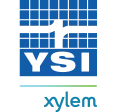History
The first aquaculture boom in the U.S. was in the late 1980s with the phenomenal growth and success of catfish farming in the southern states. As a result of this new source of fish for the marketplace, Bob Evans Farms Restaurants started to feature catfish dinners on their regular menus.
The story goes that Bob Evans contacted Ohio House Representative Vern Riffe about Ohio needing to raise catfish as well. Mr. Riffe then put forth legislation to establish an Aquaculture Research and Extension Facility through Ohio State University in his home district near Piketon, Ohio. The School of Natural Resources at Ohio State then assigned two professors, Pete Cole and Tom Stockdale, the task of writing a proposal for the future facility. They invited a new local fish farmer, Dave Smith, to help write that proposal which resulted in the Piketon Aquaculture Facility, designed with the help of Dr. Claude Boyd, a catfish aquaculture expert with Auburn University.
The new OSU aquaculture facility was funded and about the same time the new USDA Regional Aquaculture Centers were being established around the country. The one for the North Central Region was organized in 1988, and a call for representatives was issued to universities around the 12-state region to meet in East Lansing at Michigan State University. Pete Cole and Dave Smith were Ohio’s first representatives to this collaboration that was designed to use industry priorities to determine aquaculture research and extension efforts using USDA funds.
Dr. Cole and Dr. Stockdale organized a steering committee of existing Ohio fish farmers and university extension personnel, and Frank Lichtkoppler (Ohio Sea Grant agent) to discuss the formation of a state aquaculture association. After several meetings of this group on the OSU Agricultural Campus, bylaws were drafted and approved. Dave Smith was chosen by this group to be the first president, Rick Bolek as vice president, and Perry Orndorff as secretary.
The Ohio Aquaculture Association (OAA) held its first annual meeting in 1990, and gathered in a metal pole barn on the Farm Science Review grounds near London, Ohio. The meeting included guest speakers, Dr. Gary Miller (indoor RAS expert from Indiana) and Jim Kahrs (pond aquaculture veteran from Missouri and the first industry chair of the NCRAC). Heavy rains were not invited, but came anyway, and at times the speakers could not be heard well over the roar of raindrops on bare metal roofing. Elections were held again and the same officers were voted in with the addition of Rob Jones as treasurer and Ken Rideout and Don Brandenburg as board members.
Ohio State then hired Jim Ebeling, an aquaculture engineer, as the first manager of the OSU Piketon Aquaculture facility. Jim designed and constructed most of the indoor tank systems that were used to support research by Dr. Konrad Dabrowski and was aided by his assistant, Dean Rapp.
Under the leadership of their first president, Dr. David Smith of Freshwater Farms of Ohio, the OAA focused on hosting annual meetings and workshops to provide educational resources needed to advance the industry in Ohio.
Ohio wildlife regulations of that time did not recognize fish farming, and most existing operations were growing pond fish fingerlings for private pond stocking such as Fenders Fish Hatchery, Glen Harner, Botkins Fish Hatchery, Beckers Fish Hatchery (who developed the first hybrid bluegill used today) or as bait like at Calala’s Water Haven. When new fish farmers started to raise yellow perch for food fish, state wildlife officers would not permit their sale unless they met the sport fishing length regulations for Lake Erie perch.
As these regulatory issues began to arise that affected the industry, the OAA responded by lobbying on behalf of its members to protect their businesses and keep them sustainable.
Working with a task force lead by the Ohio Dept. of Agriculture (ODA) Director, Fred Dailey, assisted by ODA legislative specialist Scott Zody, the group included OAA representatives Dave Smith, Perry Orndorff, and Jim Ebeling, state legislator Gene Krebs, and ODNR’s Gary Isbell.
The legislative changes and aquaculture permit programs were designed and compiled. Ohio Farm Bureau, with legislative specialist Karl Gephardt, helped guide the effort through the state hearings and the eventual approval from the Ohio Wildlife Council. A significant victory was achieved when legislation was passed in 1995 and Ohio finally had the regulatory framework to allow growth of the aquaculture industry by designating it as an agricultural activity.
Following the success of the legislation passage, the Association continued with annual meetings, and elected a new president in 1997, but momentum slowed when that leader left aquaculture and the position, and Jim Ebeling’s successor did the same.
In 1998, when Laura Tiu, a new Aquaculture Extension Specialist was hired at OSU South Centers in Piketon, she energized a small group dedicated to reviving the OAA. Dr. Smith agreed to temporarily become president again during this transition, and from a group that included Bill Lynch, Jim Brehm, Dan Kaiser, Mark Remlinger, Geoff Wallat, Bob Calala and a few others, George Hood was elected the new president.
One of their first priorities was to develop a strong state aquaculture association and build on the relationship with the Ohio Dept. of Agriculture. It was at this time that a state aquaculture plan was developed and the first attempts to implement it.
Funded only by membership dues, the volunteer board of directors had limited resources to accomplish their mission. Through the help of the aquaculture program at OSU, a grant was received providing the funds to resume fulfilling the needs of its members and developing the industry.
Workshops, farm tours and networking opportunities returned on a regular basis and relationships with regulators were reestablished. In 2005, members elected Bob Calala as their new president, replacing Dan Kaiser who had lead the organization for the previous three years. Bob continues to provide leadership for the organization.
With an active board of directors and strong support from industry regulators, educators and key leaders, the OAA and the Ohio aquaculture industry continued to grow. At this same time, consumer interest in buying fresh, local products, coupled with concerns over the quality of imported seafood, brought even more attention and opportunities for Ohio’s fish farmers.
Aquaponics interest skyrocketed around 2013 and the association responded by increasing training opportunities and resources for these growers. It also opened the door to a new group of members and partners for the OAA that continues to grow. Interest was so high when aquaponics was featured at the 2015 Ohio Aquaculture Conference that it sold out.
The OAA co-hosted with the USDA’s North Central Regional Aquaculture Center (NCRAC) the inaugural North Central Aquaculture Conference in 2014 in Toledo, Ohio. The Association again co-hosted the North Central Aquaculture Conference in 2020 in Columbus, Ohio. The goal of these regional conferences is to bring fish farmers, university research extension personnel, and exhibitors together to provide a regional education event to advance aquaculture and aquaponics in the North Central region.
In the 2014-2019 period, the OAA actively participated in OSU South Centers “Aquaculture Boot Camp” program in Piketon, designed to provide potential and beginning aquatic culturists information and “hands-on” experiences to help guide them in developing their own farm. One unique outcome of the four separate boot camps conducted was students were required to develop a business plan for their farm. Three of the OAA’s current Board of Directors are graduates of the Aquaculture Boot Camp program.
In 2015, the OAA’s Annual Aquaculture Conference expanded from a one-day event to two days. This provided additional educational presentations and increased the number of industry exhibitors willing to participate. Since 2015, there are typically 24 presentations and 20-24 exhibitors. Eight to 10 of the presentations are given by actual fish farmers, who provide other fish farmers insights into how their farm is a success. In 2017, the Ohio Aquaculture Conference was a joint conference with the Ohio Chapter of the American Fisheries Society.
At the January 2015 Annual Meeting, OAA members elected Bill Lynch, owner/operator of Millcreek Perch Farm, as their president. Bill is a former OSU Extension Educator in pond management and serves on the NCRAC Board of Directors and chairs their Industry Advisory Council. He is committed to expanding educational opportunities for all of Ohio's fish farmers.
The OAA, working with ODNR’s Division of Wildlife, succeeded in making the sale of bullfrogs and green frogs legal for those fish farmers possessing an aquaculture permit issued by the Division. Pond culture farms produce large numbers of tadpoles as a by-product to growing fish, and had no available market to legally sell them even though demand for tadpoles is high. Sales of tadpoles will provide an additional revenue stream for many Ohio fish farms.
Today, the OAA stands strong and prepared to support its members and provide the resources needed to be successful. The future looks bright as we work to make Ohio a leading state in the development of a sustainable aquaculture industry.











